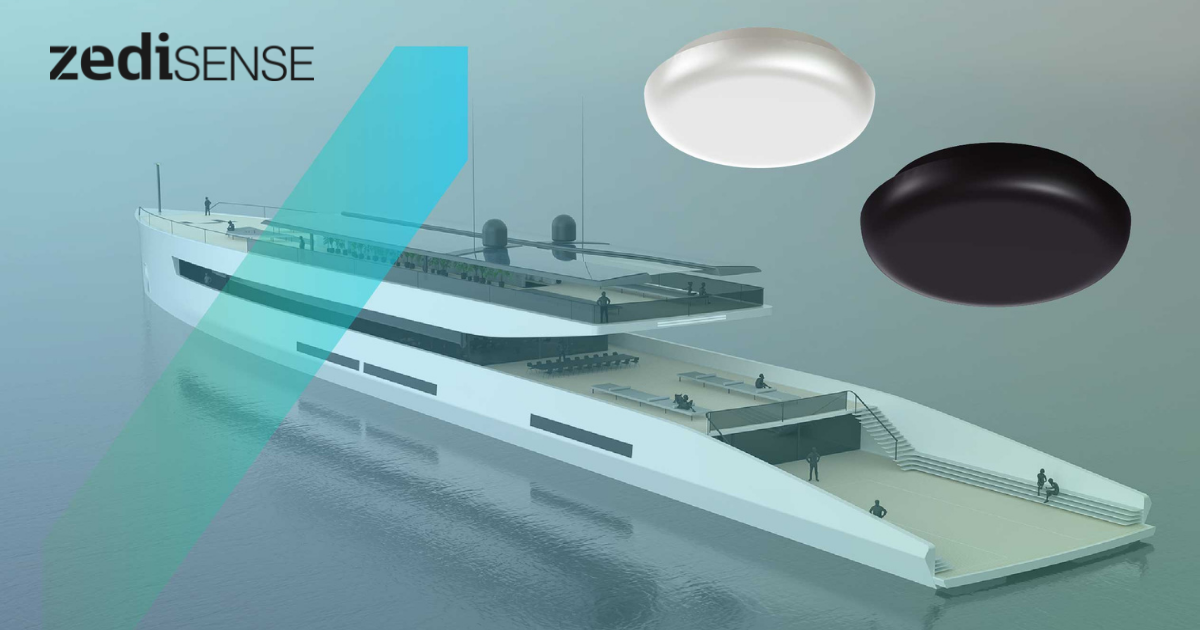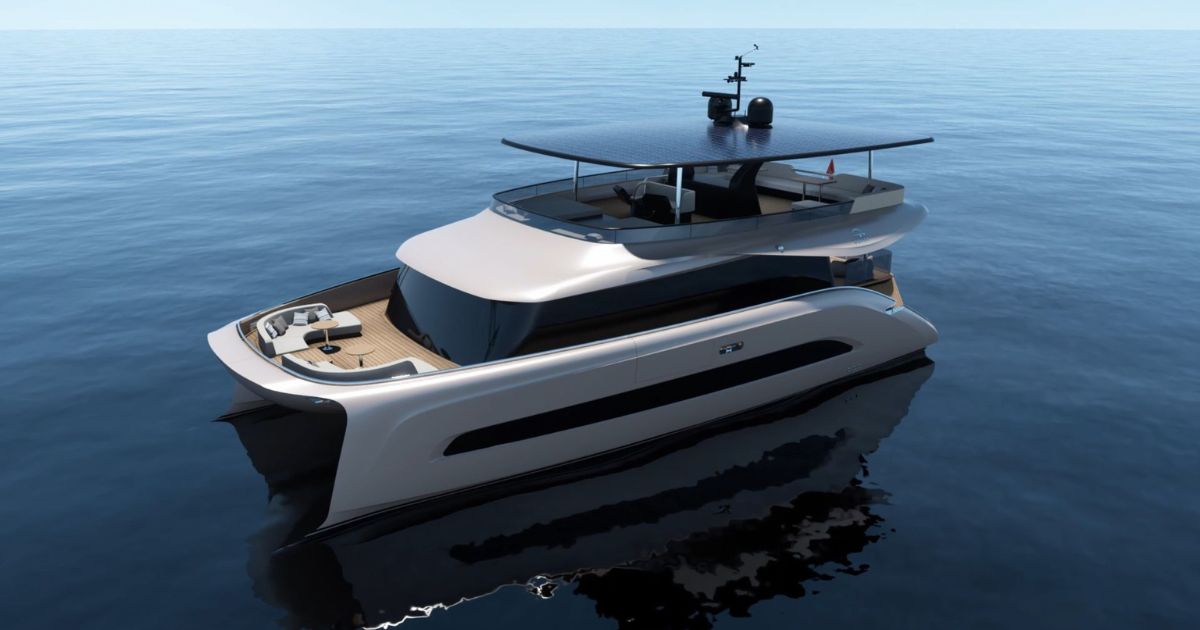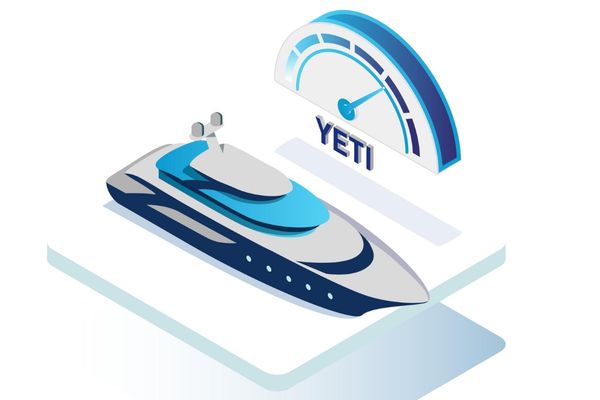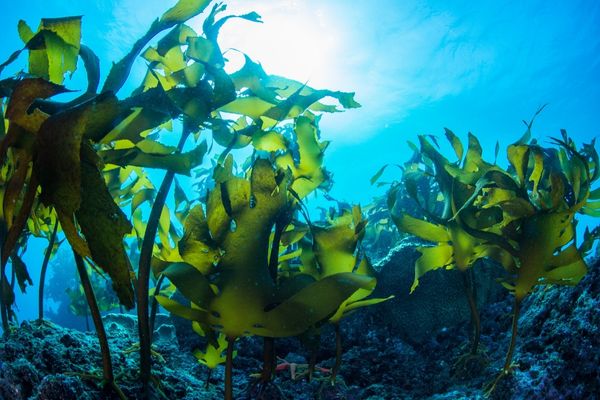The Challenges and Innovations for Reducing Carbon Emissions at Sea

As I sit down to write about this subject, the temperature outside here in the Netherlands is over 30C and has been as high as 40C in recent weeks. I can’t remember any year that has seen so much continuous sunshine from early spring through to midsummer in this part of the world, and water levels are at an all-time low due to a severe lack of rainfall.
This is a worrying meteorological trend which has become more pronounced each summer for the last few years. Scientists are now predicting the worst drought in 500 years, which is already threatening fresh water supplies, and operationally disrupting commercial shipping traffic on the Dutch and European inland waterways.
Anyone who still thinks that climate change is not a reality must be inhabiting an alternative universe or living permanently in an underground cave. The facts and figures supporting the massive increase in carbon emissions during the postindustrial era are irrefutable. And now, the dependence on far too much fossil fuel energy from, let’s say, dubious and unreliable sources, has hastened and considerably sharpened the focus on the ‘energy transition’ towards renewables, and the ultimate objective of ‘net zero.’
However, as the COP26 meeting in UK last November proved once again, the prospects of getting all nations fully aligned with the net zero targets are continually stretched. And since then, the war in Ukraine, the rise in energy prices, and the threat of economic 'stagflation' around the world, may well trigger some countries to resort to using more fossil fuels as a short-term survival fix.
Even before all this happened, the European Commission's 'Fit for 55' plan for achieving net zero by 2050 was looking very optimistic in the eyes of many observers. Unfortunately, we already looked unlikely to reach the original target of 40 per cent reduction in emissions by 2030. The EU then raised the bar even higher by aiming for a 55 per cent reduction in C02 emissions in just nine years. Surely even the most optimistic viewpoint would now cast some doubts on whether that can really be achieved, even though credit is due to the EU for aiming at such a bold and entirely justified target.
 Further scientific proof of human-caused global heating
Further scientific proof of human-caused global heating
Coincidentally, as I was writing this article, a recently updated report from the ‘CarbonBrief’ organisation was published. This comes from a field of scientific research which has been providing data for nearly 20 years on what it calls ‘Extreme Event Attribution.’ In other words, identifying where the actual causation lies for triggering tragic meteorological episodes such as floods, heatwaves, droughts, and storms.
The latest findings are based on over 400 peer reviewed studies which have analysed weather extremes from wildfires in the US, to heatwaves in India, typhoons in Asia, or record-breaking rainfall in UK. The striking conclusion provides more evidence that human activity is a definite driver of such unprecedented climate events, particularly those that are linked to excessive heat.
In fact, from a total of 504 extreme weather events that have been studied, 71 per cent of them were found to be made more likely or severe by human-caused climate change. And of the 153 extreme heat events, 93 per cent were proven to be caused or aggravated by climate change.
So, whichever way we look at it, we have to accept that excessive carbon emissions are going to be with us for quite a long time into the future. This undoubtedly means that the negative effects on climate change and the environment will continue, unless other ways are found to reduce, capture, and sequester the C02 emitted into the atmosphere.
The good news is, that nature, technology, and the ingenuity of mankind have a lot of potential for providing such solutions, particularly when all three are combined.
Man-made solutions for man-made problems
Obviously one of the most immediately effective ways of reducing carbon emissions is to find innovative technological solutions for using less energy. A good example of this is ZediSense, a concept developed by VTT Senseway, a visionary technology company based in Finland with a mission to be an active collaborator in reaching carbon neutrality.

One of the biggest wastes of energy and a cause of unnecessary emissions is heating, cooling, ventilating, or lighting spaces that are unoccupied by humans. Think of a large cruise ship with thousands of cabins, a hotel or office block with hundreds of rooms, or a superyacht with enough cabins or spaces to consume excessive energy if they are not occupied.
ZediSense has been designed, perfected, and practically demonstrated to detect even the slightest human movement, such as the chest rise and fall of a sleeping cabin inhabitant. So, by incorporating this intelligent sensor technology into a build or refit project, with appropriate software support, it can deliver cost savings and improved sustainability via real-time 24/7 occupancy data, and highly effective cabin or room ambience optimisation.
Looking specifically at our own industry, of course the transition is well underway towards electric and/or hydrogen propulsion. This will, over time, reduce the carbon footprint of recreational boating, especially with more onboard hotel loads provided by solar power and stored in battery banks with ever higher energy density ratings.
One example which has caught my attention is the Swiss designed Aquon One, a twin hulled 19.5 metre motor yacht which is due to come to market in 2023 via Fraser Yachts Brokerage. After several years of working with some collaborative technical partners, this is a concept that really looks to set the trend for zero emission recreational boating. With 64sqm of solar panels and fuel cell powered electric propulsion, the designers have incorporated a green hydrogen generation system. This produces hydrogen (H2) gas from desalinated sea water, using the solar energy from the photovoltaic panels on the roof to drive the onboard electrolyser. The gas can also be compressed to 300 bar and stored onboard in specially constructed tanks for later use.

Aquon One
The result is emission free, silent cruising with a top speed of 16 knots and cruising at 8 knots. With accommodation for up to 10 people, a further advantage is the onboard hotel load being provided by fuel cells that turn the hydrogen gas back into electricity.
Obviously, I’m not the only one to be impressed with the Aquon One, as she was recently recognised by the jurors in the Monaco Energy Boat Challenge, and awarded the New Generation Prize as the most feasible ‘new to market’ solar / hydrogen yacht project.
An energy rating system for superyachts
Another interesting development involves the process of monitoring, recording, comparing and optimising energy usage on superyachts, of which there will be 13,000 in the world when the currently booming order book is delivered in a few years’ time.
Three years ago, the Water Revolution Foundation was launched with a mission to further the aims of environmental sustainability in the superyacht world. Since then, the implementation of their YETI concept (Yacht Environmental Transparency Index) has come to fruition, and has now evolved into a Joint Industry Project, with 20 participants including major yacht builders, naval architects, marinas, refit operations, and some specialised research faculties.
 The first working version of YETI is now being populated with input data focusing on the operational lifespan of the participating yachts, with information retrieved from their onboard AIS (Automatic Identification System.) Energy efficiency is key to reducing carbon emissions and is a prominent factor in the quest for reducing a yacht’s environmental impact. It therefore has a high degree of focus in the YETI 1.0 computational analysis. For example, the input data required to fully complete a YETI rating assessment includes determination of the yearly energy demand for the vessel. This considers propulsion/main engine, generators, hotel load, solar, battery power and heating/cooling distribution systems.
The first working version of YETI is now being populated with input data focusing on the operational lifespan of the participating yachts, with information retrieved from their onboard AIS (Automatic Identification System.) Energy efficiency is key to reducing carbon emissions and is a prominent factor in the quest for reducing a yacht’s environmental impact. It therefore has a high degree of focus in the YETI 1.0 computational analysis. For example, the input data required to fully complete a YETI rating assessment includes determination of the yearly energy demand for the vessel. This considers propulsion/main engine, generators, hotel load, solar, battery power and heating/cooling distribution systems.
According to Robert van Tol, Executive Director of Water Revolution Foundation, the system is currently in a critical fleet review stage and will be fully analysed to provide robust and inclusive ratings based on the data input from 200 yachts. He said: “The yachts that support us in this phase will get a preliminary score and a complementary feedback report on how the score came about, they will know where points were gained and lost, and will receive recommendations for potentially reducing their carbon footprint.”
Harnessing nature for carbon capture and sequestration
In one of my articles for OnboardOnline earlier this year, I referred to some of the methods being developed for utilising the vast existing power of the oceans to store carbon.
It’s worth repeating here an explanation of how carbon sequestration works, and how much of it can be achieved via the various natural elements in the world around us. Carbon sequestration is the process of capturing, securing, and storing carbon dioxide from the atmosphere. The idea is to stabilise carbon in solid and dissolved forms so that it does not cause the atmosphere to warm. The process can occur in two forms, ‘biological’ (via oceans, forests, soil, grasslands) and ‘geological’ (via injection into underground formations and rocks.) These potential developments are now viewed by the scientific community as an essential part of reducing the effects of climate change.
One of the reasons for this is that certain industrial sectors such as steel, cement and chemicals production have a C02 emission that is hard to abate, because it comes from the actual physical manufacturing process, rather than from the energy source which powers the machinery etc. For example, when cement is made, something like half the emissions come from the decomposition of limestone into lime and CO2.
These sectors account for about 20 per cent of global CO2 emissions, so it makes sense that industrial ‘carbon capture and storage’ (CCS) has a lot of developmental potential for reducing the emissions that they presently release into the atmosphere.
Innovative carbon capture developments
Whilst researching this subject I came across several CCS solutions that are already being employed or trialed, hopefully with the potential to be upscaled, and eventually to have significant impact on carbon reduction in the atmosphere.
Here are a couple of land-based examples. In Texas USA, they have employed giant air scrubbers which suck large volumes of air from the atmosphere. Using simple chemistry, they extract the C02 and pump it into redundant oil wells that have been dry since being decommissioned last century.
CarbonCure is a new technology which is aimed at reducing the excessive CO2 emissions from the concrete industry. The concept basically captures the carbon gas from the production process and recycles it by injection into the fresh concrete being made. Apparently, it gets mineralised and permanently embedded in the concrete as it sets without compromising the performance of the material.
 And lastly, something for us ocean lovers. Another new carbon capturing idea utilising seaweed, which is known to be a very effective collector of CO2 at the ocean interface. Exploring the potential for expanding this natural phenomenon to a higher level is the goal of another joint industry venture. A pilot project being shared by SINTEF, DNV, Equinor and Lundin is aiming to develop a technology that eventually has the capacity to capture millions of tons of C02, by cultivating large amounts of sugar kelp.
And lastly, something for us ocean lovers. Another new carbon capturing idea utilising seaweed, which is known to be a very effective collector of CO2 at the ocean interface. Exploring the potential for expanding this natural phenomenon to a higher level is the goal of another joint industry venture. A pilot project being shared by SINTEF, DNV, Equinor and Lundin is aiming to develop a technology that eventually has the capacity to capture millions of tons of C02, by cultivating large amounts of sugar kelp.
What exactly is sugar kelp? A wildly cultivated yellow/brown-coloured marine algae which is already being commercially farmed in some parts of the world for a variety of uses, from food to potential biofuels. It is also said to offer important environmental benefits by removing excess nutrients and carbon dioxide and releasing oxygen to mitigate against ocean acidification.
The project objective is to identify ocean zones with a natural capacity for kelp cultivation, and to set up farms with the weed strung out between buoys. The photosynthesis produced by sunlight will then grow the kelp and bind carbon into it from the atmosphere during the process.
After about six months in the ocean, the kelp will have absorbed the maximum amount of CO2 and can then be harvested and further processed for carbon storage. The project outline identifies two potential methods of achieving this.
-
Bio-Coal: This is a method of converting the harvested kelp into a nutrient-rich fertiliser that can improves farming land. This is achieved via a pyrolysis process, then mixing with soil and composted kelp which safely and securely stores the carbon in the ground.
-
Ocean floor storage: The harvested kelp can be sunken to the ocean floor in areas that are more than 1000 metres deep. At these depths it mixes slowly with surface water and absorbs into the sediments, therefore locking in the greenhouse gasses so that they cannot be released into the atmosphere.
Endless future possibilities for carbon reduction
Having sifted through quite a lot of research material on this subject, I am quietly confident that a range of developments for both reducing and capturing carbon emissions will continue to emerge across all industrial and mobility sectors, including in our own recreational boating world.
I guess the important change that is driving these initiatives is the realisation by an ever-increasing number of us human beings that we cannot continue to ‘foul our own nest.’ A notion that I’m sure is alive in the minds of everyone who works in yachting, or enjoys their time on the water.
One of the survey reports I read gave some indication of how today’s business managers are adapting to this new reality. It was conducted by US based Aspentech, an industrial software developer focusing on sustainability solutions.
As a result of questioning 340 senior business executives they concluded the following:
-
78 per cent of companies see C02 reduction as a competitive advantage.
-
Hydrogen energy and carbon capture are two of the most frequently cited initiative ideas.
-
60 per cent envisage sustainability measures as having a major impact on their industry.
In conclusion, I am certain that more regular updates on this subject will be featured in OnboardOnline.

Post your comment
You cannot post comments until you have logged in.
Login to post a commentComments
No one has commented on this page yet.
RSS feed for comments on this page | RSS feed for all comments